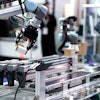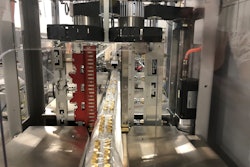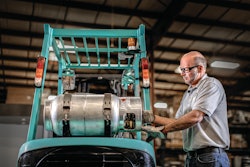
Armed with more advanced data collection tools and the processing power necessary to turn all that raw data into insights, industries around the world are entering a period of massive change and innovation.
Dubbed the Fourth Industrial Revolution, or Industry 4.0, this era will be characterized by the smart and integrated automation of traditional processes. And, it will impact the industry at a magnitude greater than any shift since electronics and technology became mainstays in the sector.
Insight-driven manufacturing is a subset of Industry 4.0, focused on using automated insights from technology like artificial intelligence (AI) to make better decisions across a manufacturing operation. As AI in manufacturing matures, we’re seeing the emergence of three distinct elements -- insight-driven decisions, outcome-driven use cases and workforce empowerment.
Breaking down insight-driven manufacturing
Insight-driven decisions are powerful because they provide human decision makers with a wealth of information that hasn’t been available before. Armed with AI, these individuals can make decisions and target improvements that are revolutionary instead of incremental.
Rather than tweaking a production process to yield small output gains, for example, insight-driven decisions enable plant managers to reach the conclusion that rebuilding a production process from scratch would deliver major benefits.
Outcome-driven use cases are another staple of insight-driven manufacturing because they ensure that insights aren’t simply used as interesting thought experiments. When outcomes are always operational and centered on business value, they can have the biggest possible impact on the success of the business.
Whereas automation is commonly thought to replace human workers, manufacturers themselves must guide insight-driven manufacturing. In this case, AI is a tool that human workers can harness to do their jobs much more efficiently.
Click here to hear more about automation and human employees working together:
Industry 4.0 has massive potential to transform manufacturing, but it won’t necessarily be an easy transition. To introduce insight-driven manufacturing, an organization will need to follow these four steps:
1. Change your mindset around maintenance processes from compliance to insight
Insight-driven manufacturing requires the installation of data-capturing technology like Internet of Things (IoT) sensors, but also requires a new mindset that’s open to change.
New insights should be seen as more than just a means to keep existing processes functioning normally. Rather, manufacturers should see them as opportunities to change everything, from scheduling and production processes to inventory tracking and even product design.
The quicker an organization is to adopt this mindset, the quicker it can begin reaping the benefits of insight-driven manufacturing and the innovative manufacturing techniques those insights yield.
2. Ask frontline workers for their expertise
Frontline workers are on the production floor day in and day out, which is why they have an incredible understanding of the ins and outs of a manufacturing operation. AI can offer all the insights in the world, but it will never interpret them into clear action items as well as human experts. Instead, those two primary sources of expertise need one another.
But, mandating insight-driven manufacturing from the top down is likely to bring resistance from the factory floor. To prevent unnecessary conflict, it’s crucial to gain buy-in from maintenance teams and production leaders from the start. Explain how AI in manufacturing will augment and not replace their efforts, and communicate the benefits to profits, production, and employee safety that machine health monitoring can produce. Once a team is on board, it’s equally important to arm them with the tools, training and budget necessary to enact productive change.
3. Always look for new improvements
It’s easy to implement the obvious improvements and then say a process is “good enough,” but innovation is a continuous effort. The most successful manufacturing operations are always striving for process improvement, operational improvement, better business practices, improved energy efficiency and more.
Ongoing data collection and advanced AI can fuel these efforts, but it’s ultimately up to organizational leaders to keep pushing for progress. Continuous improvement in manufacturing is an ongoing journey, no matter how advanced an organization might get.
4. Create new hybrid roles to get more value
For manufacturers transitioning to insight-driven work, it’s critical to have the right positions in place that allow people to drive change management and implement insights. For example, a maintenance technician and reliability engineer whose adept at embracing insights and articulating their value should be promoted into a role where they can drive change and teach others how to do it as well.
Instead of implementing change from the top down, look for people with a thorough understanding of production processes and give them roles like insight-driven specialist or reliability director in charge of machine health implementation. Putting experienced personnel into these roles will ensure valuable use cases emerge as quickly as possible.
Industry 4.0 will be marked by exciting transformations, and innovative manufacturing technologies hold incredible potential in the sector. With AI in manufacturing spearheading applications like machine health monitoring, human personnel will have more information than ever before, helping them to make insight-driven decisions about repair timing, schedules, and all other aspects of the production process. Ultimately, the process of turning vast quantities of sensor data into insights will spur the kind of continuous improvement in manufacturing that is a hallmark of this new industrial era.
Click here to hear more about machine learning and technology in the supply chain:




















